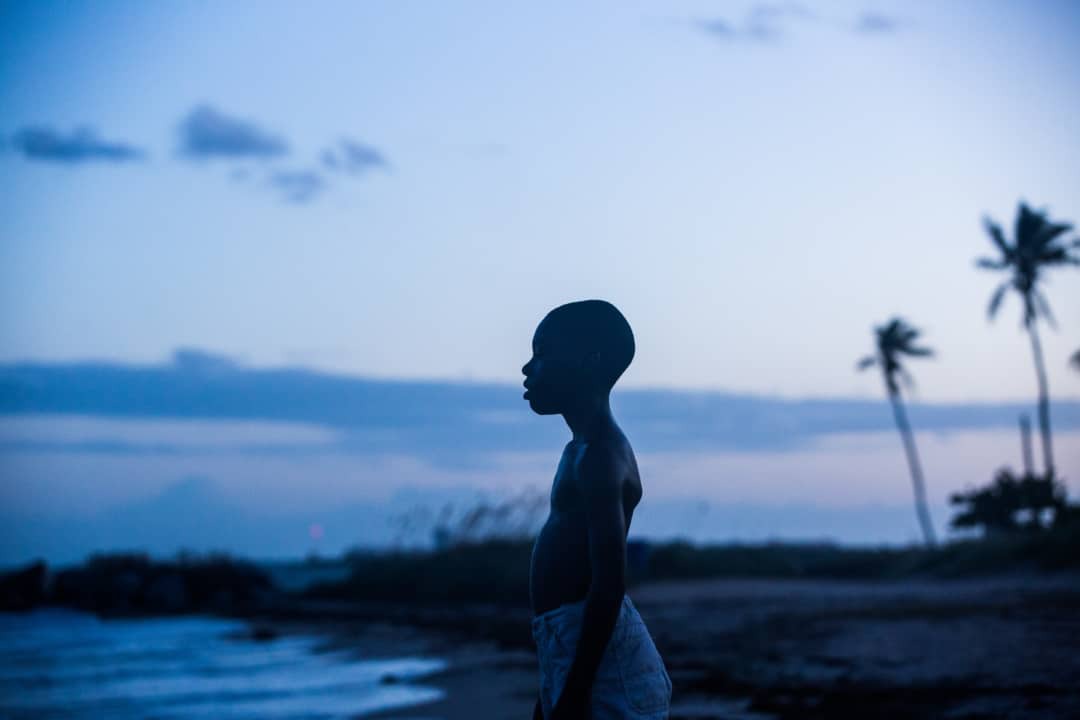Content warning: This article references substance addiction.
Who you gonna be?
Conquering the question of who we are is one of the many parts of the universal human condition. While lots of films have focused on telling about this journey to one’s true identity, none have brilliantly captured the humanistic quality of a story so heartfelt and intimately provoking as Barry Jenkins’ Moonlight.
This 2016 Academy Award-winning film departs from the conventional coming-of-age genre and overrides clichés used to represent Black people in film. Moonlight is Jenkins’ adaptation of Terelle Alvin McCraney’s autobiographical play, “In Moonlight Black Boys Look Blue.” It’s a story about its protagonist, Chiron, struggling with the ideals of masculinity in 1980s Miami. It is a film that is equally about the complexities that define us and how they go ignored underneath society’s simplified and harmful labels, as it is a story specific to its gay Black protagonist and his journey to find himself.
Moonlight’s plot is separated into three parts — ‘Little,’ ‘Chiron,’ and ‘Black’ — named after personas of the protagonist’s childhood to adolescence. Between each layer of the story, we come to understand Chiron by watching his interaction with his surroundings.
Moonlight’s approach to capturing Chiron’s conflict of understanding his place in the world is brilliantly expressed by the way the character is played by three separate actors. By symbolizing the personality change that occurs throughout Chiron’s coming-of-age in this way, Moonlight explores the naturalistic aspect that people may feel like an entirely different person at different parts of their life.
The first act, Little, begins during Chiron’s primitive years. The act is named after the nickname that the bullies from Chiron’s school gave to him. This nickname haunts Chiron; throughout the film, he attempts to replace it in order to feel secure.
Near the beginning of the film, in a scene captured by a shaky handheld camera, Little is shown running away from a group of bullies and finds himself locked in an abandoned, boarded-up house. He is found by Juan, an old, cool-looking drug dealer. Juan takes Little out to eat and then brings him home to his girlfriend, Teresa.
The lightness and fluidity of the following scenes with Little, Juan, and Teresa express a sense of love that contrasts with Little’s feeling of emptiness once he is taken back home to be with his mother, who has a substance use disorder. The theme of family dynamics plays out in the film more thoroughly as Chiron attempts to take care of his mom, while also only receiving love and acceptance from his father figure, Juan, who is also his mother’s drug dealer.
In the film’s second act, its story jumps to Chiron being enrolled in high school. He grapples with intense bullying and his mother’s substance use disorder, which is affecting their lives even more than before. Chiron struggles to find himself and feels like there is no hope in his life aside from the kindness and comfort of his only friend, Kevin. That comfort is quickly lost when Kevin is peer pressured to inflict violence against Chiron to fit in with others at their school.
In the film’s last act, Chiron has transformed into adulthood. He has also created an outer shell named ‘Black.’ Living far away from his past, Black submits to the idea of masculinity. When Kevin calls Chiron to meet him again, Black must confront the past he set out to destroy. However, he soon discovers that the nurturing part of himself is a genuinely true part of his character. Chiron’s love for his friend Kevin and his capacity to forgive his mother plays out beautifully in this last part of the film.
Between each pivotal chapter of Chiron’s story, audiences step into the world of Moonlight, which is framed by cinematographer James Laxton to depict Chiron’s inner feelings. By expressing Chiron’s feelings, Jenkins allows us to understand the protagonist’s true character; one that cannot be completely categorized or explained. Moonlight taps into Chiron’s discomfort about the unspoken characteristics that lay underneath society’s expectations of us. Between each layer of Chiron’s story, we recognize that his journey isn’t to understand who he is; rather, it’s to be accepted for who he is.
James Laxton captures Miami, Moonlight’s main setting, in a beautiful, dreamlike sense — which heavily opposes the raw and naturalistic depiction of the largely impoverished area that Chiron resides in. Laxton also edited Moonlight using heavy contrast to define and enrich the dark complexions of the men of the film’s cast. The emphasis on the complexions through a contrast effect fosters Chiron’s growth from Little to Black because, throughout the film, he is surrounded by unapologetically Black men.
Additionally, the film’s mobile tracking shots also allow its audience to feel as if they are participating in each of the film’s scenes. For instance, when Juan is teaching Chiron how to swim, the camera is submerged in and out of the water, following the natural motions of the waves.
The abandonment of clear panelled shots to capture every aspect of the action allows the film to be more naturalistic. When the camera is framed from the perspective of Chiron, it helps us understand that the audience is watching the story from Chiron’s point of view. This connection is important in the film because it enables us to understand the simplest actions and facial expressions of the characters. It takes the simple handshake between Chiron and Kevin from a gesture that means ‘bye’ to something intimate and romantic.
Ultimately, Moonlight is a brilliantly captivating film that everyone should watch. Its exploration of deep and intimate themes — from identity to masculinity, addiction, and love — are represented beautifully in this story about a boy’s journey to find himself.


